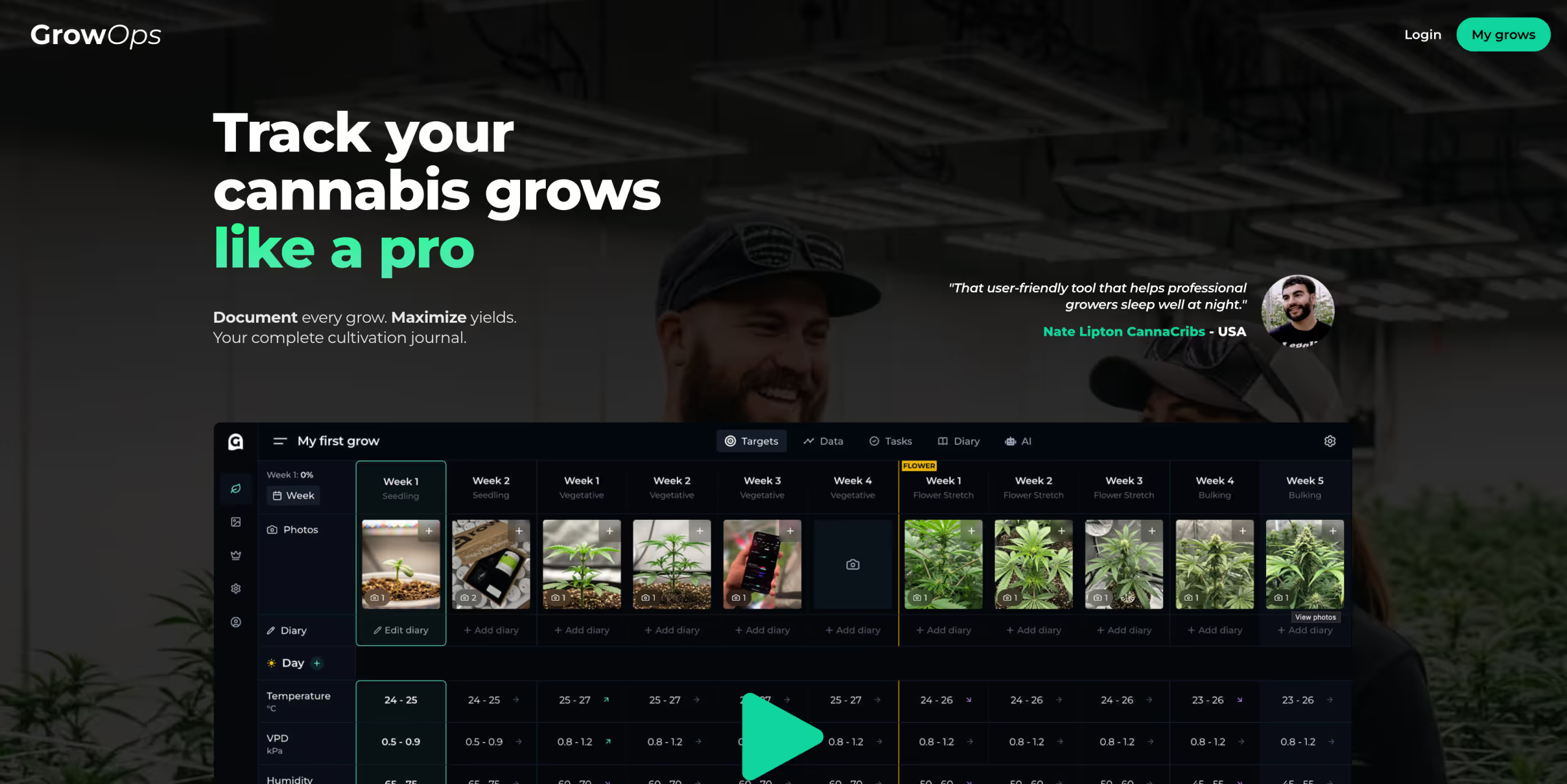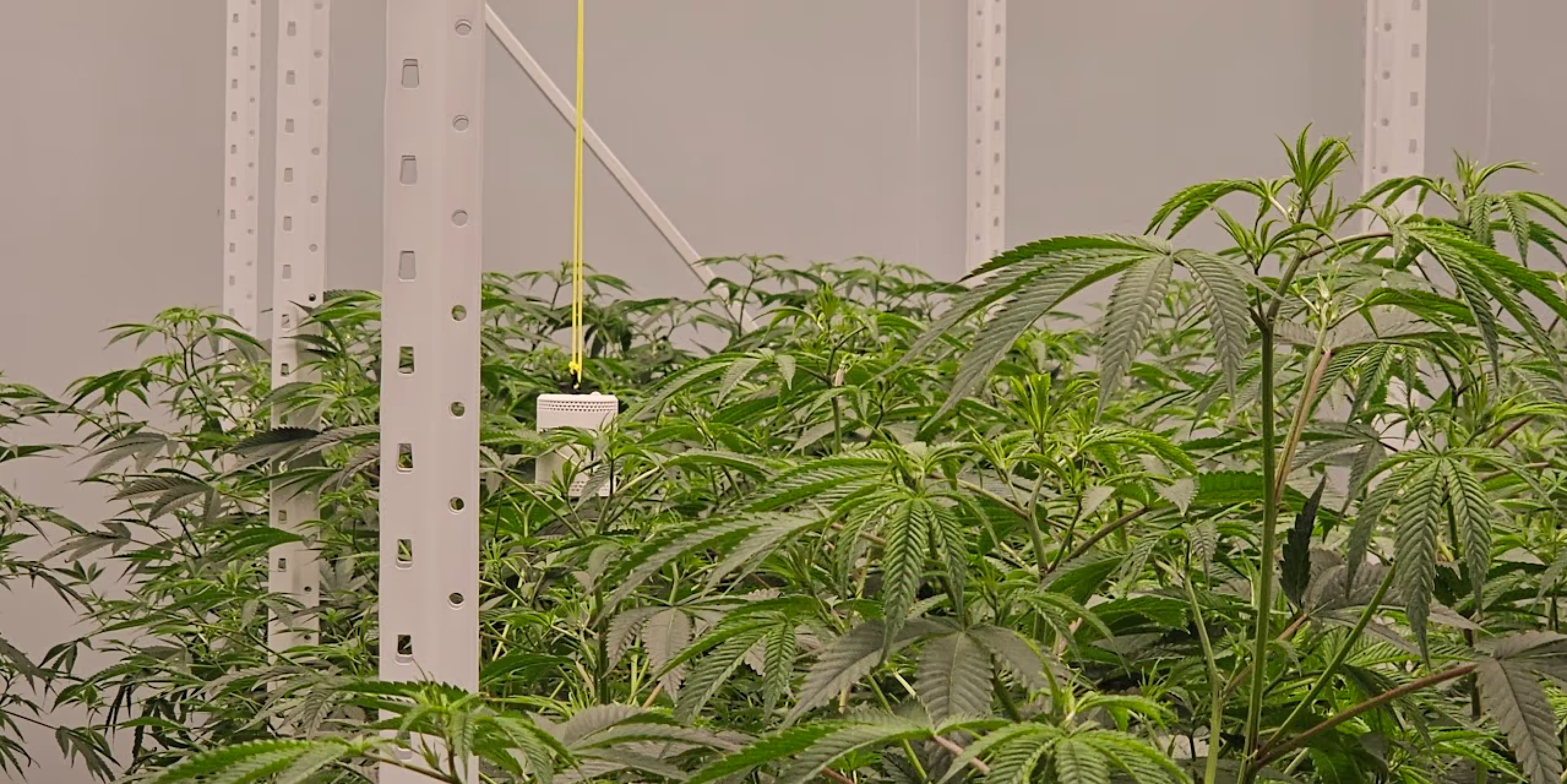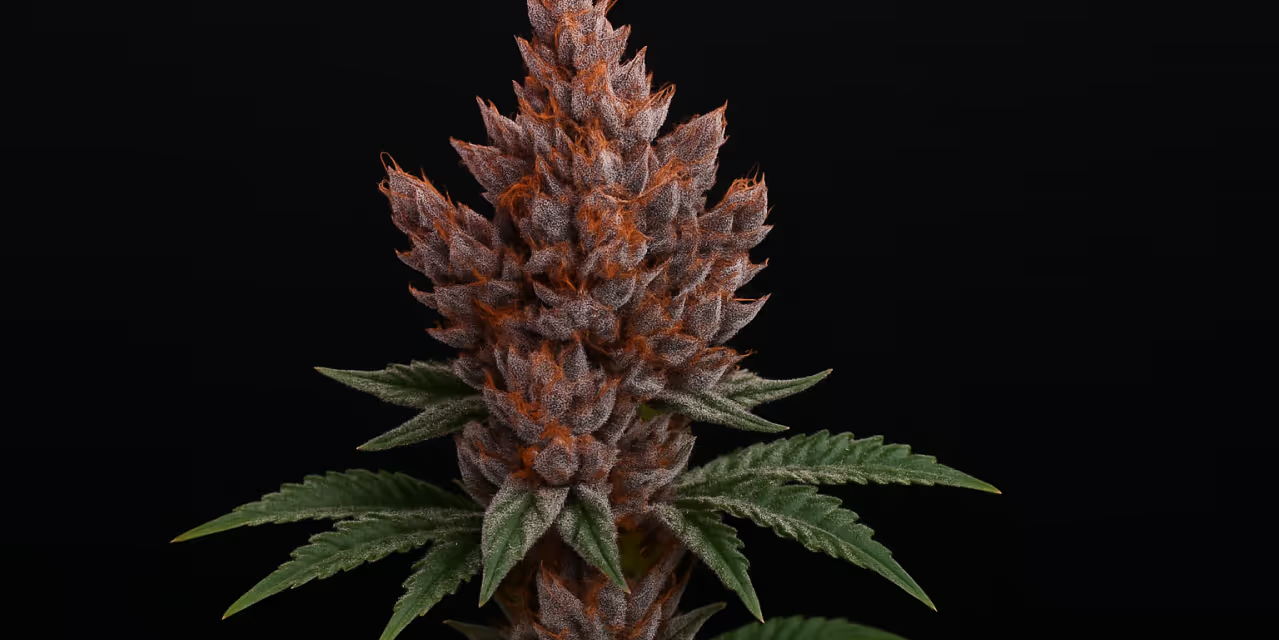Why is leaf surface temperature important?


When you think about the temperature of your growing environment, you’ll no doubt consider the ambient air temperature. Do you ever wonder about the temperature of a leaf?
Leaf surface temperature (LST) is a lesser-known concept. But it plays a crucial role in plant physiology.
LST is a vital sign of a plant's health and happiness. This temperature is crucial because it shows us the exact conditions that your plants are actually experiencing. It directly affects a plant's ability to grow, breathe, and thrive.
Understanding this aspect of plant life shines a light on how your plants interact with their environment and how you can use that information to your advantage.
Disclaimer: Any information given on this site is for educational purposes only. Please ensure if you’re growing cannabis plants, you’re doing so in accordance with the law and subject to appropriate permissions and licenses of the applicable country.
What is leaf temperature?
Leaf temperature is the measure of how hot or cold the surface of a leaf is at any given time.
It may sound simple, but it's a complex trait influenced by many factors. Unlike air temperature, which is what we feel around us, leaf temp is determined by the balance between the energy absorbed and lost by a leaf.
This balance is influenced by light exposure, the leaf's ability to reflect light, the speed at which air circulates around your plants, humidity, and the plant's own water use efficiency. It's a dynamic attribute, changing throughout the day and under different environmental conditions.
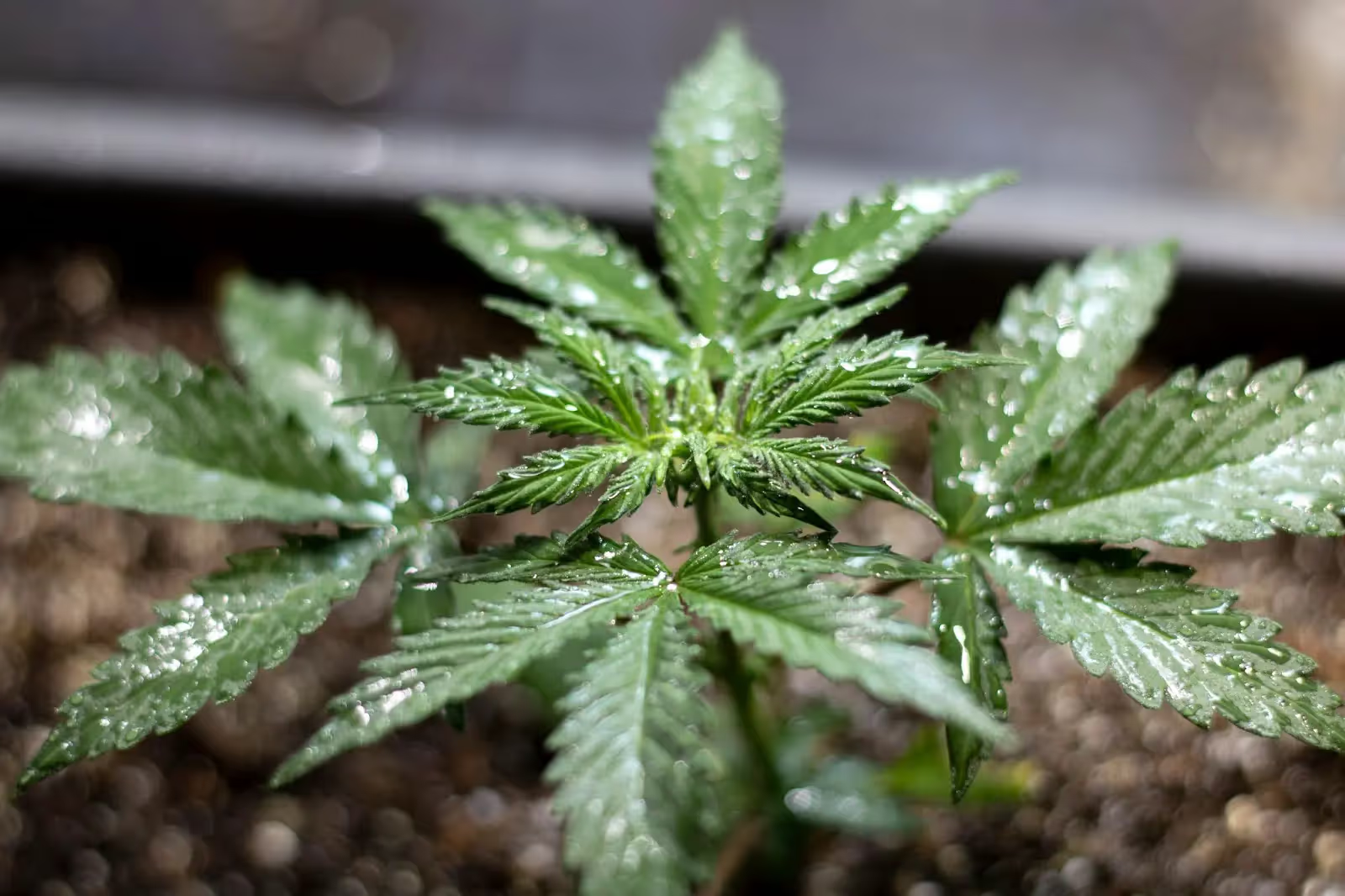
Why leaf surface temperature is important
Understanding LST is crucial because it directly impacts plants' photosynthesis and leaf expansion.
But it's not just about energy conversion; LST influences water usage through transpiration, nutrient uptake, and overall plant stress levels.
When a plant's leaves are too hot or too cold, it can't operate at its best, much like how we feel sluggish on a sweltering day or shiver on a cold one.
By tuning into LST, you can make informed decisions about how watering, feeding, environment, and lighting can best suit your plants.
Measuring leaf surface temperature
It’s easy to figure out ambient room temperature with a thermometer or hygrometer, but this doesn’t truly show what your plants are experiencing. You can measure LST just as easily. To get started, you'll just need the right equipment.
Leaf temperature sensors
Leaf temperature sensors, infrared heat guns and infrared cameras are among the most effective tools for this task, along with infrared thermometers.
These devices allow you to take precise temperature readings without making physical contact with the plant leaves, which could alter the measurement or damage the plant.

The Grow Sensor
The Grow Sensor stands out for its advanced capabilities. With a bottom-mounted infrared sensor for measuring temperature, it's designed to measure LST precisely.
The Grow Sensor also continually measures room temp to help you create the ideal ambient temperature. This level of accuracy is crucial for making informed decisions about your plant care routine to help you create the perfect conditions for your plants to flourish.
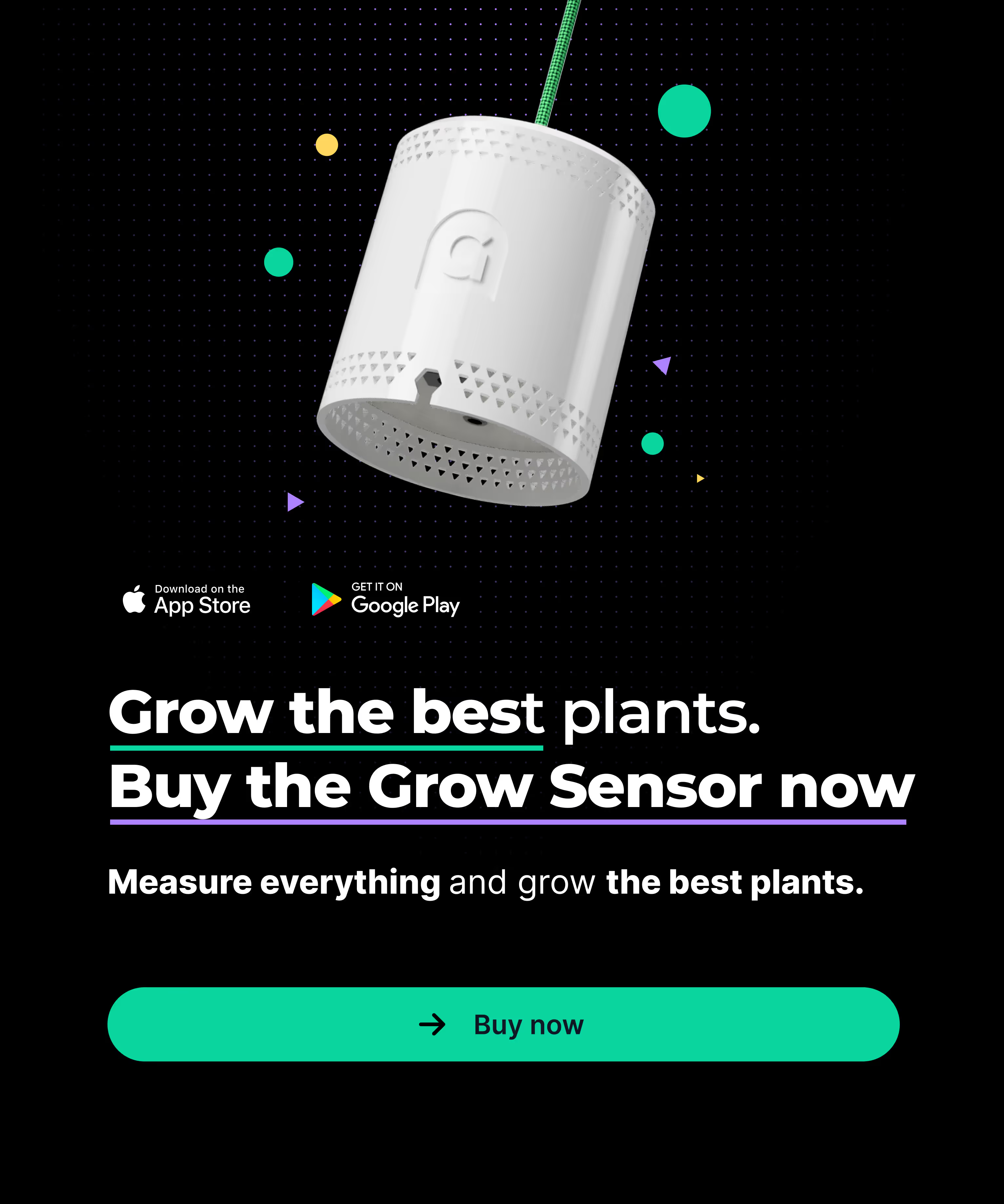
How to measure leaf surface temperature
Measuring LST is about understanding the plant's environment as a whole. Here are some tips for effective measurement:
- When using handheld devices like an infrared thermometer, ensure you keep a consistent distance from the leaves to ensure accuracy.
- Take readings at different times of the day to understand how LST changes with light intensity and ambient temperature conditions.
- Measure multiple leaves across the plant canopy to understand the canopy temperature distribution thoroughly. This helps account for variations caused by lighting or airflow.
- Ensure the sensor or device isn't directly exposed to grow lights during measurement, which can skew the readings.
By following these guidelines, you can ensure that your measurements are accurate and reflective of your plants’ true conditions, allowing you to make informed adjustments to their environment.
What should leaf surface temperature be?
The answer isn't one-size-fits-all. A general rule of thumb is that most plants thrive when their leaf temp is slightly below the ambient air temperature, usually by about 1-2°C. This is due to the evaporative cooling effect of transpiration.
Note: This may not always be the case, depending on the lights that you’re using.
Ideal LST ranges for cannabis
Optimal LST ranges for cannabis are crucial for optimal growth, health, and cannabinoid production.
The ideal leaf surface temperature for cannabis can vary through its different growth stages. Adjusting the LST to suit each stage can help your plants thrive.
Seedling or clones
- LST range: A temperature range of about 24°C to 28°C for young plants and clones is beneficial. This warmth supports initial root development and early leaf growth.
- Considerations: Young plants are delicate and more susceptible to extreme temperatures. Maintaining consistent warmth without overheating is essential, as excessive heat can hinder root establishment and health.
Vegetative Stage
- LST range: Maintaining a LST between 24°C and 30°C is ideal during the vegetative stage. This range supports robust leaf and stem growth, setting a solid foundation for flowering.
- Considerations: This is a rapid growth phase, and the plant will benefit from consistent temperatures within this range. Good airflow and light intensity will help promote optimal LST and healthy, vigorous growth.
Flowering Stage
- LST range: As the plant enters the flowering stage, a temperature range between 24°C and 28°C is optimal. Slightly cooler temperatures can encourage the development of terpenes and cannabinoids, enhancing the quality of the final product.
- Considerations: During the late flowering stage from week 6 onwards, lowering the LST and keeping it under 26°C prevents heat burning off the terpenes, which are essential for the plant's aroma and flavour profile. However, it's crucial to avoid drastic temperature drops that could stress the plant.
Tailoring the LST to each growth stage while considering the overall grow room environment will help your cannabis plants develop healthily and yield high-quality flowers.
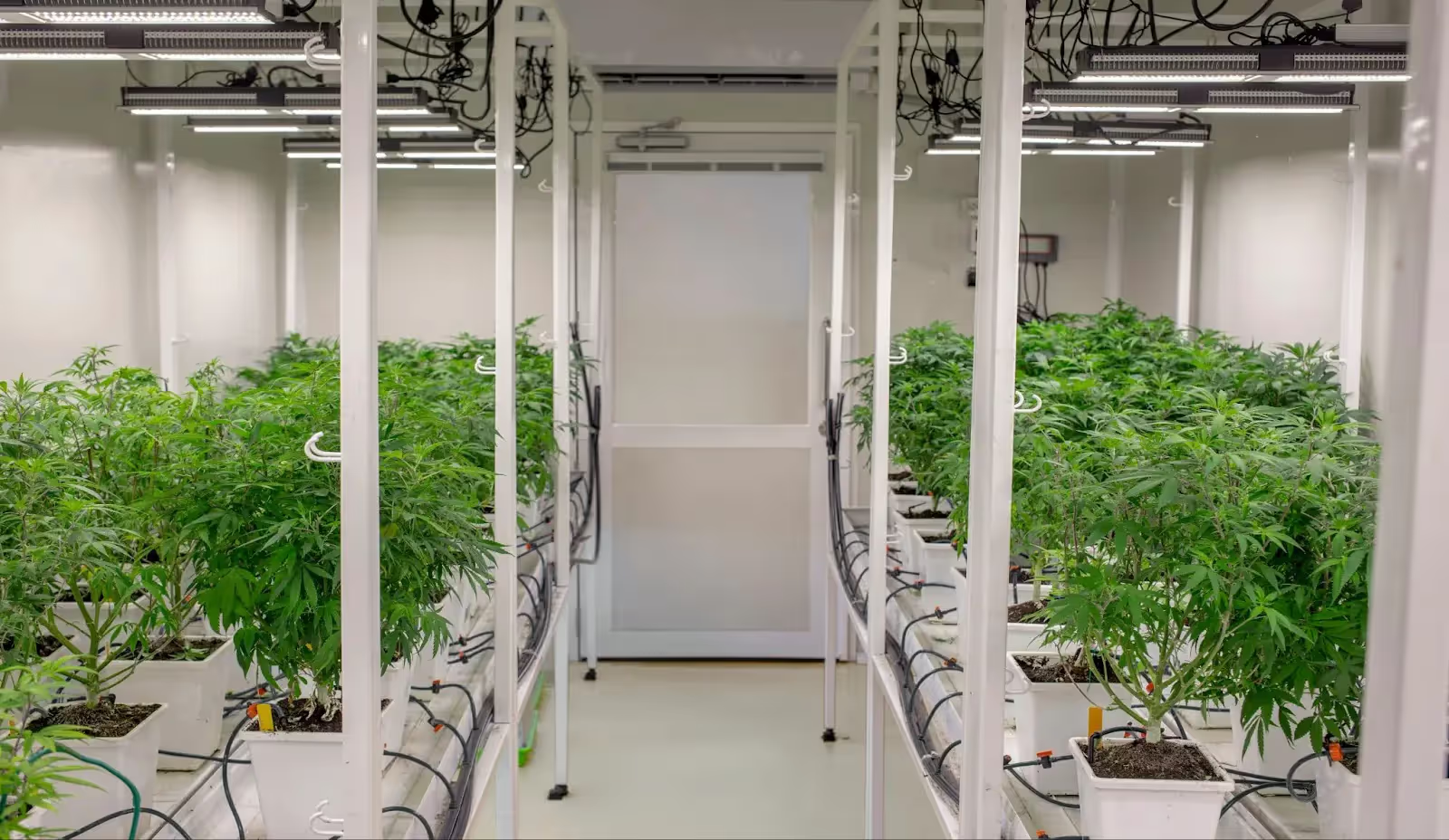
Factors influencing leaf surface temperature
Several factors can influence LST, including:
- Light Intensity. High-intensity lights can increase LST, potentially stressing plants.
- Ambient temperature. The surrounding air temperature affects the leaf surface temperature.
- Air movement: Good air circulation can help maintain even LSTs across the plant canopy.
- Relative humidity and Vapor Pressure Deficit (VPD). Depending on your humidity, your VPD can be high or low, dramatically affecting the plants' temperature. These factors affect stomata opening, rate of transpiration and, consequently, how the leaves cool.
VPD and LST
It's super important to consider vapour pressure deficit (VPD) when discussing LST. This is because VPD represents the relationship between temperature and relative humidity and their joint effect on plant transpiration.

Sustaining an optimal VPD can help ensure your plants can transpire efficiently, keeping the LST in the ideal range.

As you’ll know, there’s an ideal VPD range for every stage of growth. But you can also take dialling in your grow room up a notch by calculating your VPD readings from your LST readings instead of your grow space’s ambient temperatures with the Grow Sensor.
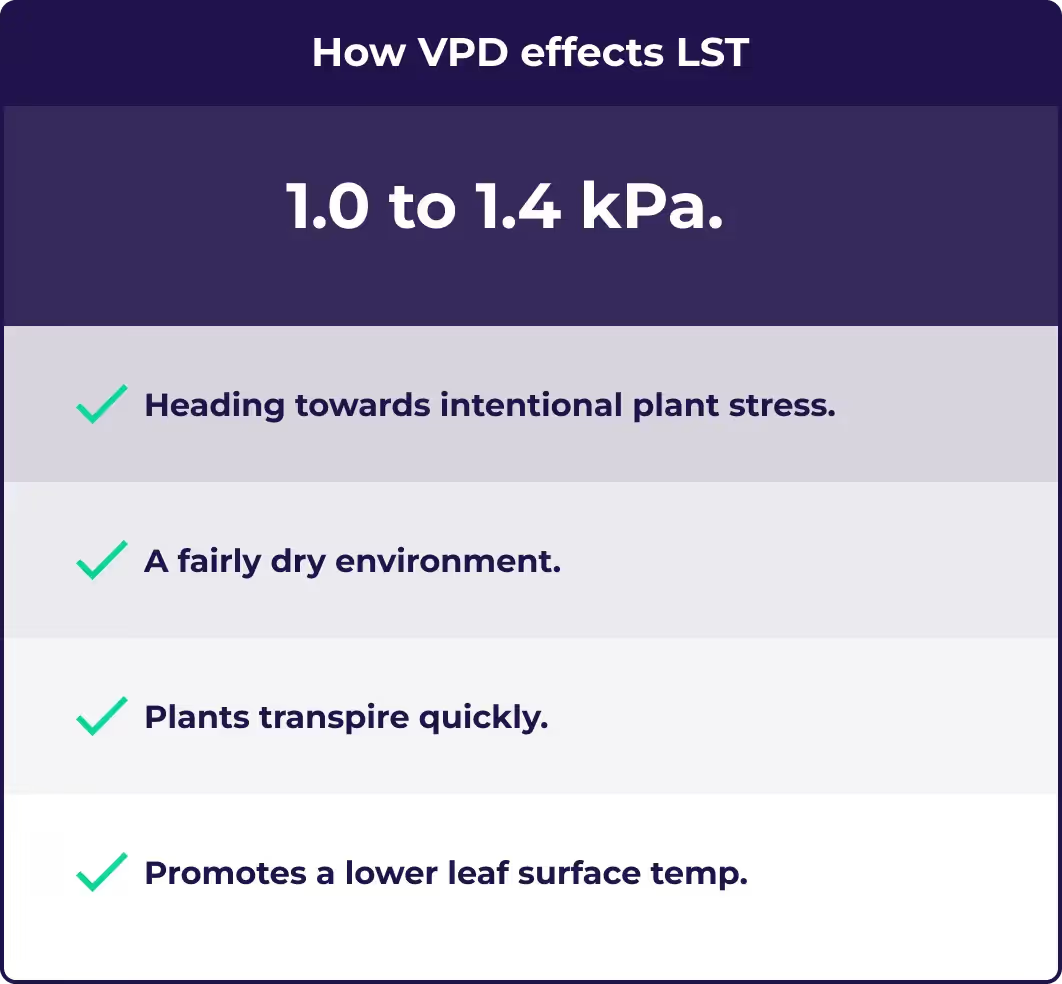
Leaf temperature and photosynthesis
Cannabis leaf surface temperatures play a pivotal role in photosynthesis, the engine of plant growth. Understanding this relationship can help you optimise conditions for your plants to flourish.
How does leaf temperature affect photosynthesis?
Each plant species has an optimal photosynthesis temperature, and leaf temp is a critical factor in this equation.
If the LST is too low, the enzymes responsible for photosynthesis work less efficiently, slowing down the process.
On the flip side, if the LST is too high, the plant can suffer heat stress, leading to a shutdown of photosynthetic activity to conserve water.
Optimal LST ensures that photosynthesis can happen efficiently, leading to robust plant growth and higher yields.
Adjusting environmental conditions for optimal photosynthesis
To sustain the ideal LST for photosynthesis:
- Monitor LST regularly with tools like the Grow Sensor to ensure it stays within the optimal range for your plants.
- Adjust lighting intensity and distance based on LST readings to prevent overheating or underheating your plants.
- Use fans or ventilation systems to improve air circulation, helping to stabilise LST across the plant canopy.
By keeping LST in the optimal range, you can support vigorous photosynthesis, paving the way for healthy, productive plants.
This proactive approach to temperature management is a cornerstone of successful plant care and cultivation.

How does leaf temperature affect transpiration?
Transpiration is how moisture is carried through plants from roots to tiny pores called stomata on the underside of leaves, where it changes to vapour and is released into the atmosphere. It’s crucial for healthy plants.
Transpiration has a direct cooling effect on plants, much like sweating in humans. LST plays a significant role in regulating this process.
When LST increases, transpiration rates typically rise as plants attempt to cool themselves, leading to a greater demand for water from the roots.
This natural mechanism to cool down plants is vital for maintaining optimal enzymatic activity and ensuring continued respiration under warm conditions. However, there's a delicate balance to be maintained:
- If LST is too high and the water supply is limited, increased transpiration can lead to water stress, affecting plant health.
- At the other end of the scale, transpiration rates may decrease if the environment is too humid, leading to higher LST and potential heat stress.
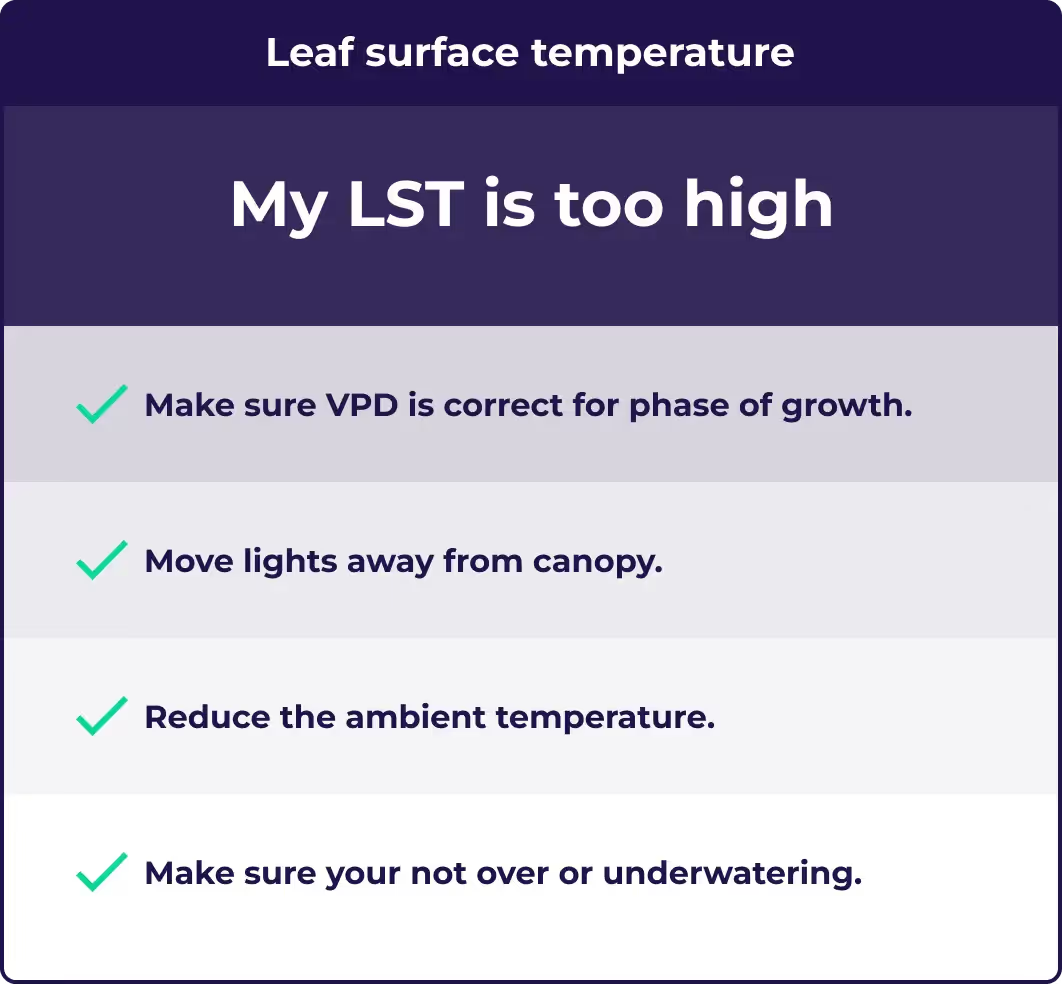
Managing transpiration and LST for plant health
To ensure that transpiration and LST can continue at optimal levels, consider the following strategies:
- Regular monitoring: Use tools like the Grow Sensor to keep an eye on LST and adjust your watering schedule to meet your plants' needs.
- Humidity control: Use dehumidifiers or ventilation to regulate humidity, ensuring efficient transpiration without excessive water loss.
Understanding and managing the relationship between LST and transpiration can create an optimised environment for your plants, leading to better growth, health, and yields.
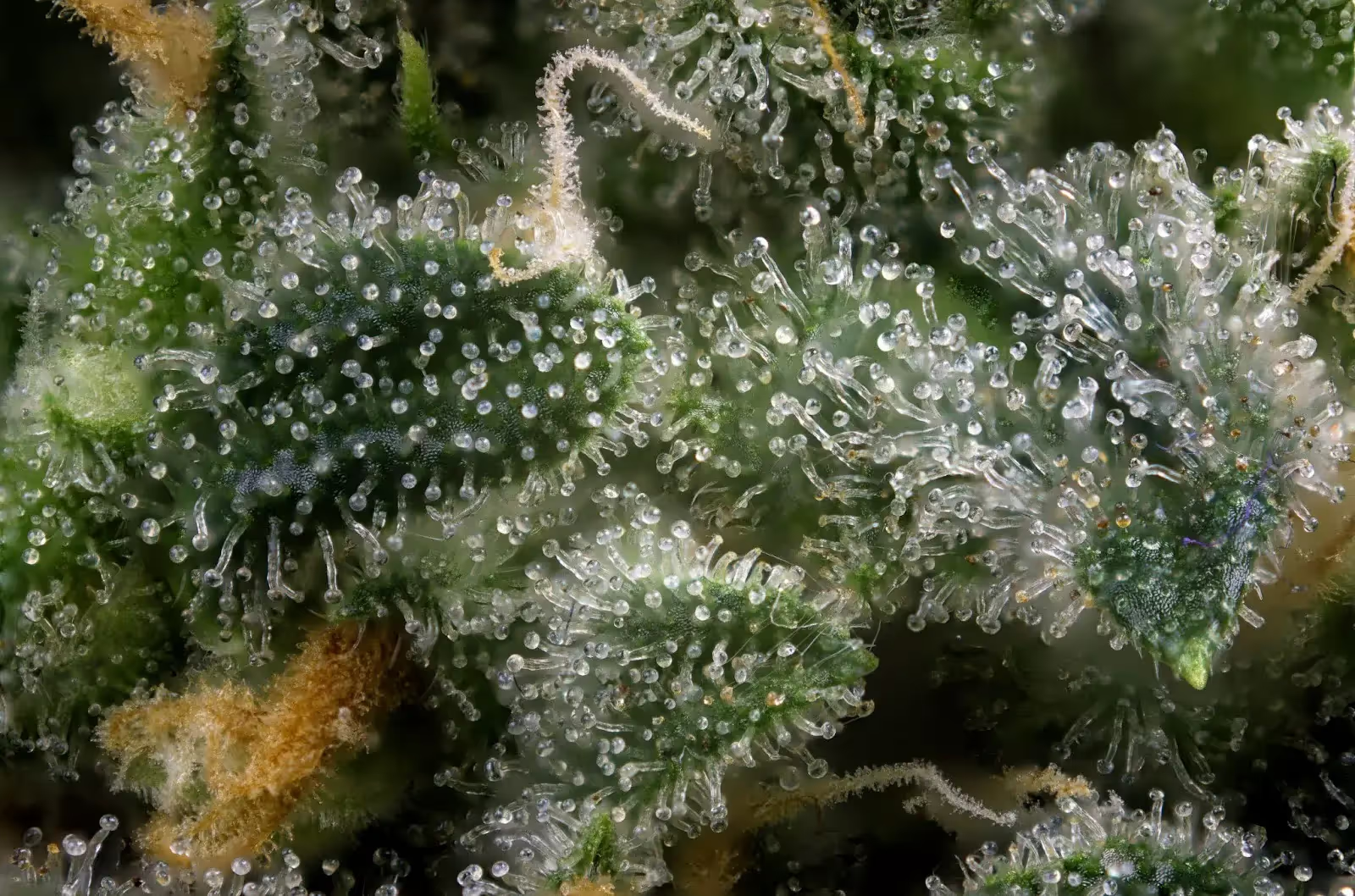
What happens when leaf temperature increases?
Elevated leaf temp can have a huge impact on plant health, affecting everything from growth rates to resilience against stress.
The consequences of high leaf temperatures
When LST rises above optimal levels, several responses are triggered in plants:
- Stress response. High LST can lead to heat stress, causing plants to activate protective measures that divert energy from growth to stress response.
- Transpiration increase. Plants may increase transpiration to cool down, leading to faster water loss. While this can temporarily reduce LST, it can also deplete water reserves quickly, stressing the plant if water is not readily available.
- Photosynthesis inhibition. Excessive heat can damage the plant's photosynthetic machinery, reducing its ability to produce energy for growth.
- Reduced nutrient uptake. High LST can disrupt the balance of nutrient uptake, leading to deficiencies or toxicities that can further stress the plant.
These stress responses can negatively affect your end product in the following ways:
- Reduced potency. High LST can stress plants, leading to reduced cannabinoid synthesis, including THC and CBD. This stress response can directly impact the potency of the final product.
- Impaired terpene profile. Terpenes, responsible for the aroma and flavour of cannabis, are sensitive to temperature. High LST degrades terpenes, leading to a less aromatic and flavorful end product.
- Decreased yield. Prolonged exposure to high LST can hinder plant growth and development. This results in smaller buds and a lower overall yield. Stress from high temperatures can redirect the plant's energy away from bud development to stress response and survival.
- Poor bud structure. Excessive heat can cause buds to develop a loose, airy structure rather than dense, resinous buds.
- Reduced trichome production. Trichomes, the tiny crystal-like structures on the buds and leaves, contain most of the plant's cannabinoids and terpenes. High temperatures can reduce trichome production and cause existing trichomes to become brittle and degrade, further reducing the potency and aroma of the cannabis.
So, as you can see, if you want to increase the quality of your end product, taking care of your LST is one of the smartest things you can do.
If you find that the sugar leaf trichrome production is low early in flower, there’s a strong chance that your lights have been too hot and your LST has been too high.
Also, if your final product smells like hay, there’s a strong chance your LST has consistently been a lot higher than it needed to be in the flowering period and has subsequently ruined the final product.
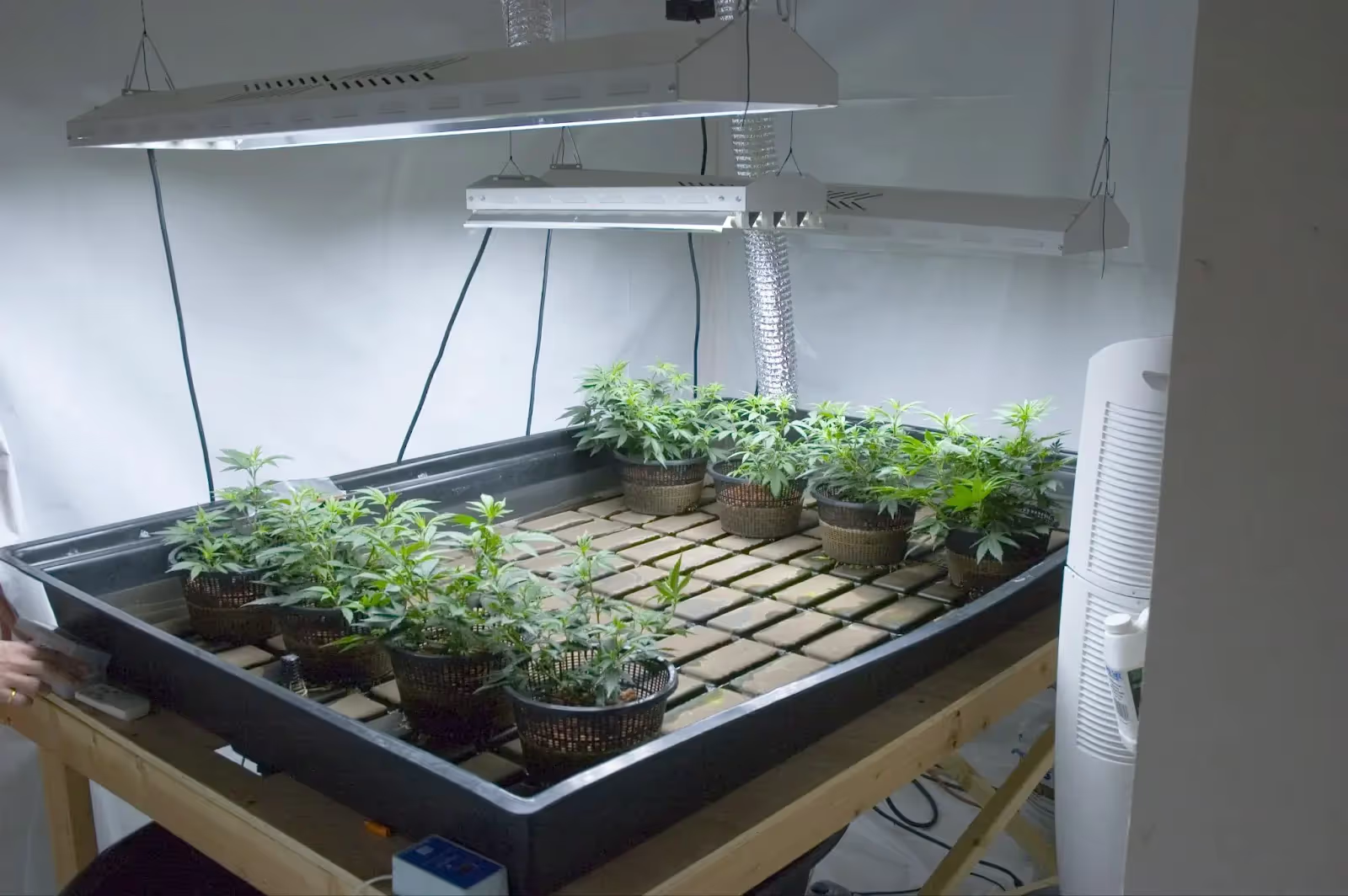
Can leaf surface temperature be higher than ambient temperatures?
It might seem counterintuitive, but yes, a plant's leaf surface temperature can exceed the surrounding air temperature, and understanding this phenomenon is key to effective plant management.
Several factors contribute to situations where LST is higher than ambient temperatures:
- Direct light exposure. Leaves directly under grow lights can absorb a significant amount of solar radiation, heating their surfaces above the ambient air temperature. Even when you’re running an appropriate ambient temperature, if your lights are pretty close to your plants, there’s a good chance your LST could be really high without you realising.
- Reduced transpiration. In low humidity or water stress conditions, transpiration rates may decrease, reducing the cooling effect on the leaves and causing LST to rise.
- Plant metabolism. The metabolic processes within a plant can also generate heat, potentially increasing LST, especially in densely planted areas where airflow may be limited.
Is a higher LST acceptable?
While a higher LST can be a cause for concern, it's not always detrimental. Plants are adaptable and can tolerate a range of temperatures.
However, prolonged exposure to high LST can lead to stress, reduced growth, and even tissue damage.
It's crucial to understand the specific tolerance levels of your plants and to monitor their LST regularly.
How to reduce leaf surface temperature
Protecting your plants from the adverse effects of high LST is essential for maintaining their health and ensuring good yields.
Here are some effective strategies for adjusting environmental conditions to optimise for LST.
Enhance air circulation
- Use oscillating fans to improve air movement around your plants. This helps to distribute heat more evenly and prevents hotspots within the canopy.
- Ensure your ventilation or HVAC system (intake and exhaust) is the right size for your grow space to allow fresh air flow and stabilise your temperatures.
Adjust lighting
- Increasing the distance between your plants and the light source affects leaf surface temperature by reducing heat intensity on the plant canopy. As a rule of thumb, always keep your plants slightly further away from your lights vs. too close to maintain a good LST.
- If your system allows, dim your artificial lighting to reduce heat output during the hottest parts of the day.
- Consider using blurple or LED lighting, which emit less heat and infrared radiation compared to HID (High-Intensity Discharge) lights like HPS (High-Pressure Sodium) or MH (Metal Halide).
If you go down the blurple route, you’ll probably have to supplement quite a bit of heat to increase leaf surface temperature and sustain the same leaf surface temperature.
This is because blurple lights are super efficient, and there’s less wasted energy given off as heat to supplement your ambient room temperature.
If you run full spectrum LED lights in your grow space, some of their energy is converted into heat, which will significantly impact the canopy level. This means you’ll need to run a slightly lower ambient room temperature than if you used blurple LEDs to achieve the ideal temperature.
If you have HPS lights, they give off the most heat. Depending on your situation, you’ll have to reduce your ambient room temp even more to maintain an optimal LST.
By measuring LST, you're essentially gauging how effective your grow light spectrum is for plant growth. Spectrums with less energy efficiency tend to raise the leaf's temperature more since less light energy is turned into chemical energy.
On the other hand, more efficient spectrums result in less heat on the leaf, as a more significant portion of the light energy is converted to chemical energy.
Control ambient temperature
- Use air conditioning or evaporative coolers to keep a cooler ambient temperature in your grow space, which in turn helps keep LST in check.
- During hot periods, consider adjusting your light schedule to have your lights on during the cooler night hours and off during the hottest part of the day.
Optimise humidity
- Maintain optimal humidity levels to ensure effective transpiration, which naturally cools the plants. Use humidifiers or dehumidifiers as needed to achieve the right balance.
- Pay attention to Vapor Pressure Deficit (VPD) to ensure that your humidity and temperature levels are in harmony for optimal plant transpiration.
Water appropriately
- Ensure your plants have adequate water, especially during hot conditions. Transpiration is a natural cooling process for plants, and sufficient hydration supports this.
Monitor and adjust
- Regularly monitor your LST using infrared thermometers (IR thermometer), thermal cameras or the Grow Sensor. Adjust your strategies based on the readings to prevent heat stress.
- The Grow Sensor makes monitoring LST easier than ever, providing real-time data. This technology lets you quickly adjust your plant care regime to sustain the ideal LST, ensuring your plants remain healthy and productive.
- By placing LST at the heart of your plant care practices, you can create a more responsive and nurturing environment for your plants, leading to more robust growth and better outcomes.
By closely monitoring LST and using these strategies at the correct times, you can safeguard your plants against the detrimental effects of high temperatures.

Takeaways:
LST is more than just a metric; it's a vital sign of a plant's well-being and its interaction with the environment.
LST plays a critical role in processes like photosynthesis, transpiration, and stress management. It impacts metabolic reactions and many other factors.
Understanding and controlling LST can significantly enhance plant health, resilience, and productivity.
Finding the sweet spot for your plant's optimal leaf surface temperature in addition to ambient room temperature is critical to promoting healthy growth and maximising your yields.
In the quest for optimal LST management, technology is your ally.
Advanced tools like the Grow Sensor offer precision, ease, and reliability in monitoring LST, allowing you to make informed decisions that promote robust plant growth.
By using tools to optimise LST, you can elevate your plant care to new heights, ensuring that your plants thrive in their ideal growing conditions.
Happy growing!








.avif)
